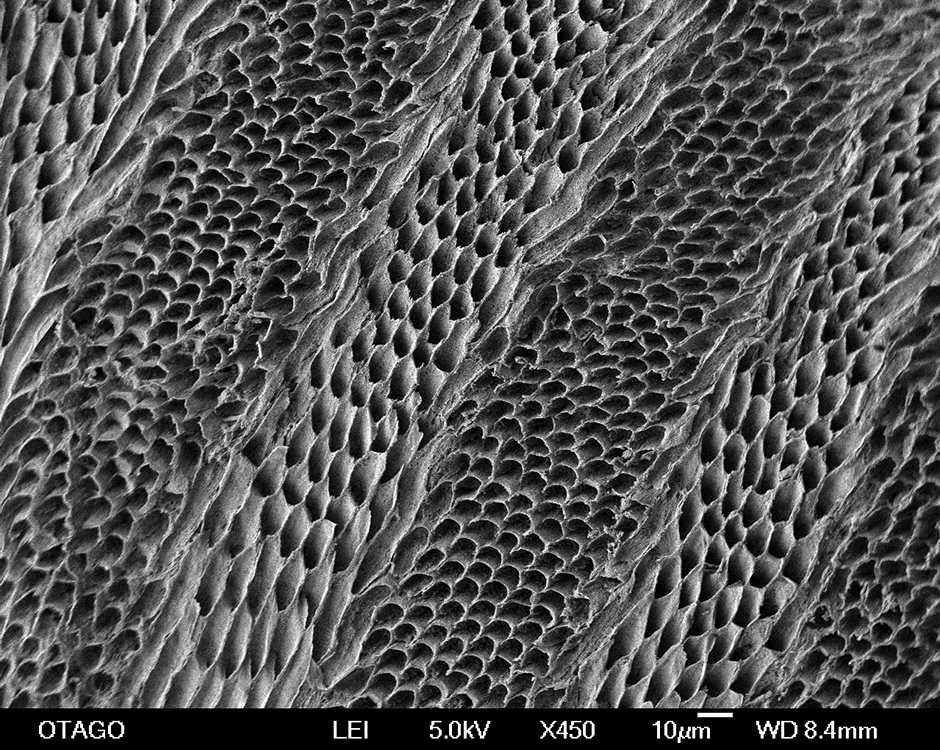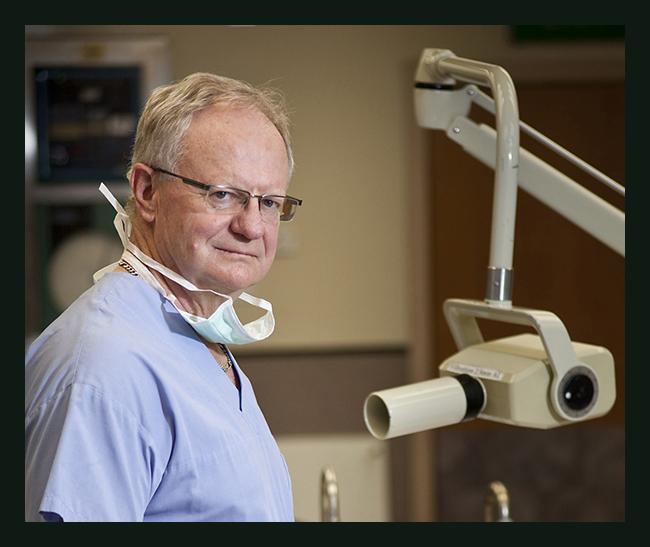Our people
Dr Carolina Loch, Programme Co-Director - Dental biomaterials and biomechanics
Professor Warwick Duncan, Programme Co-Director - Oral implantology
Key staff, students and collaborations
Our research
In biomechanics research, we look at the oral environment, investigating the forces at play and the mechanical interactions of natural and dental materials.
Biomaterials research looks more closely at the properties of these materials, and develops new dental materials to treat or prevent dental disease.
Implantology research advances therapies for replacing missing teeth, from new implant technologies to preventing disease around implants.
We also carry out forensics research, focused on the use of teeth and bone for forensic identification.
Dental biomechanics
 We carry out bite force testing using a custom-made bite force transducer. Here, it is placed between testing plungers on the Universal testing machine.
We carry out bite force testing using a custom-made bite force transducer. Here, it is placed between testing plungers on the Universal testing machine.
Biomechanics research investigates the mechanical properties of how materials in the mouth interact and break down under different conditions. We test their mechanical properties to understand how they endure repeated stress and how they fail on a microscopic scale.
Biomechanics research also involves the measuring of bite forces and calculating stress on teeth and dental restorations, which can help dentists choose the right restoration design and materials in clinic.
This work uses a combination of hands-on experiments, computer simulations, custom electronics, manufacturing using subtractive and additive processes, and programming in high-level languages.

We use nanoindentation testing to measure the mechanical properties of biomaterials. Here we show the detail of an indent in sound bovine enamel.
Dental biomaterials
Here we investigate the microstructure, mechanical properties, and composition of the natural biological materials of the mouth such as bone, teeth and keratinised materials, and of modern dental materials used in the clinic.
We investigate the effective use, strength, durability and environmental impact of modern dental materials and fabrication techniques, including CAD/CAM, 3D printing and CNC milling.
We develop and characterise new dental materials with novel properties, so that they are more durable, more comfortable or aesthetically pleasing for patients, are easier for clinicians to work with, or have bioactive properties to prevent caries or other diseases.
Using modern digital dental equipment, we investigate innovative ways to enhance the quality of life of the elderly population through prosthodontic rehabilitation of missing teeth.
Our materials research also looks at dental treatments in use in other countries but not here, such as looking at the effects of silver diamine fluoride on mineralized tissues, collagen, and biofilms.
We are also interested in the evolution of human and animal dentition, and we study the teeth of living and extinct species to learn about their biology, how they evolved, their diet, and how they interacted with their environment.

We use electron microscopy to study the micro-structure of teeth. Here, a EM image of teeth from the polar bear Ursus maritimus shows prisms of enamel arranged in Hunter-Schreger bands.
Oral implantology
Some of the biggest challenges in dental implant therapy are the correct placement of implants, how implants integrate into the jaw bone as it heals, and preventing peri-implant disease which can cause implant loss.
To combat these, we are investigating novel biomaterials, regenerative scaffolds and stem-cell therapy to aid in bone regeneration around new implants, new diagnostic imaging tools to detect peri-implant disease, and trialling new therapies for treating this disease in the lab and in model systems.
Forensics research
Our forensic research looks at the use of 3D scanning technologies for reproducing bone and teeth for evidential purposes, and the cultural and legal implications of the use of such reproductions in the justice system.
We also look at the effect of heat on teeth and bone, and methods of forensic human identification.
Jules Kieser’s legacy
 Until 2014, this research programme was led by the late Professor Jules Kieser (1950-2014), a much-missed leading light in oral biomechanics and forensics research.
Until 2014, this research programme was led by the late Professor Jules Kieser (1950-2014), a much-missed leading light in oral biomechanics and forensics research.
A Trust in Professor Kieser's name has been inaugurated as a tribute to his work and contribution to these fields.